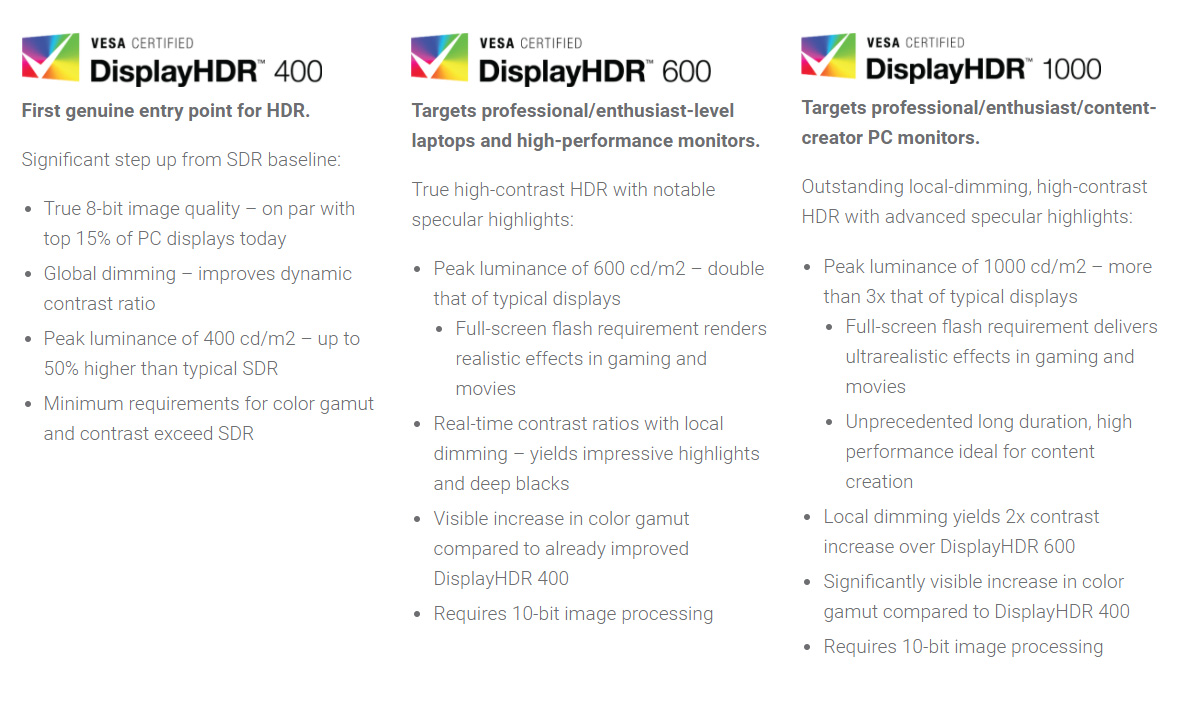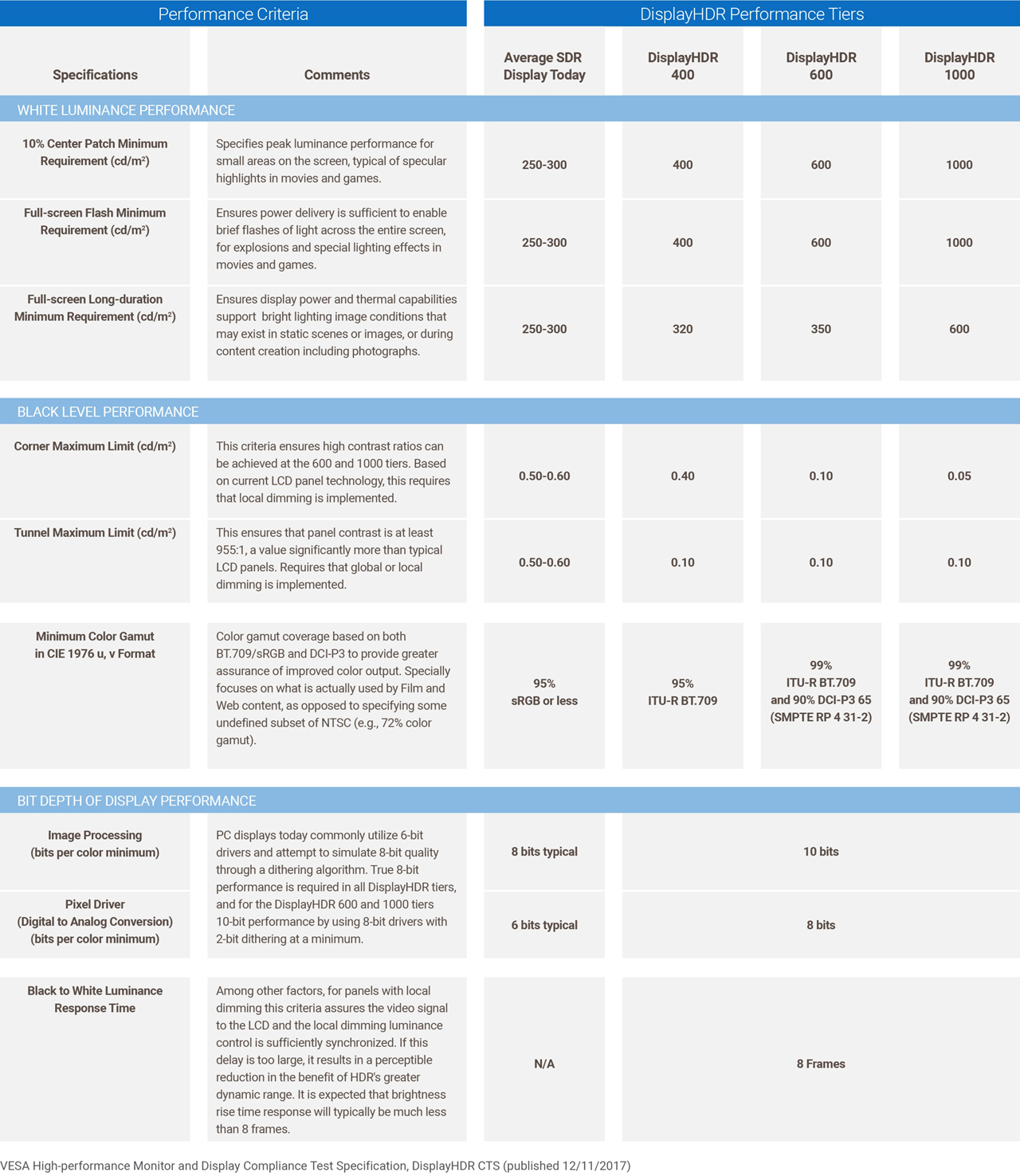VESA Announces DisplayHDR Testing Tool, Performance Tiers

The Video Electronics Standards Association (VESA) has been rather busy in 2017, what with the formation of a special group to establish standards for VR and AR earlier this year, as well as the rollout of DisplayID Version 2.0 last month. The group announced it has developed the new VESA High-Performance Monitor and Display Compliance Test Specification (DisplayHDR), the display industry's first fully open standard specifying high dynamic range (HDR) quality.
The first version of the DisplayHDR certification standard addresses the needs of LCD vendors and component makers by establishing three distinct tiers of HDR system performance. This would allow system vendors such as Asus, Dell, HP, and others to clearly display the HDR capabilities of their products according to one of the three performance standards.
VESA said in a press release:
DisplayHDR v1.0 focuses on LCDs, which represent more than 99 percent of displays in the PC market. VESA anticipates future releases to address organic light emitting diode (OLED) and other display technologies as they become more common, as well as the addition of higher levels of HDR performance. While development of DisplayHDR was driven by the needs of the PC market, it can serve to drive new levels of HDR performance in other markets as well.
VESA, in cooperation with more than two dozen companies including AMD, Nvidia, Intel, and Samsung, developed this performance test suite specification to give manufacturers the ability to test their products against a unified set of performance standards. This new tool will allow manufacturers to assess one of three performance tiers to their products without the need to invest in labs or expense hardware.
This new automated testing tool, initially for use in the PC industry, will give manufacturers a set of test metrics to measure the HDR performance level of a given device and label it accordingly. These new logos (DisplayHDR-400, DisplayHDR-600, and DisplayHDR-1000) identify the level of each product's HDR capabilities. The chart below outlines the criteria set for each DisplayHDR performance tier.
The goal is to offer a test tool for specifying HDR quality, including luminance, color gamut, bit depth and rise time by Q1 2018. More details and information can be found on the DisplayHDR website.
Stay On the Cutting Edge: Get the Tom's Hardware Newsletter
Get Tom's Hardware's best news and in-depth reviews, straight to your inbox.

-
coolitic Dimming will *always* be a no-no for me (due to the inconsistencies it causes, both for global and local). it's disappointing that it is a must-have to be "hdr", esp if new tech allows high contrast ratios without it.Reply -
coolitic Oh wait, whoops, they also plan to release different specs for different techs, silly me.Reply